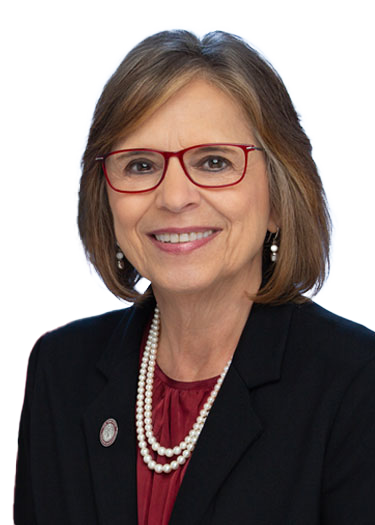Lupardo’s Letter Urges DOH to Adopt Higher Standards for Exposure to TCE
In light of the recent study released by the National Institute for Safety and Occupational Health (NIOSH) on the effects of exposure to trichloroethylene (TCE), Assemblywoman Donna Lupardo is calling on the Department of Health to adopt a more protective standard for exposure to the chemical. In a letter to DOH Commissioner Dr. Nirav Shah, Lupardo cites findings by NIOSH, which conducted a study of workers from IBM in Endicott, NY, that TCE exposure resulted in higher-than-expected cases of certain types of cancer.
“The NIOSH study raises concerns about the health of workers and community members in areas where TCE was used by manufacturers,” said Assemblywoman Donna Lupardo (D-Endwell). “Until the federal government sets a uniform standard for TCE, New York should certainly adopt stricter standards to protect the health and well being of the state’s residents.”
Under current health law, the TCE guideline is set at 5.0 mcg/m3, two orders of magnitude higher than the most risk-based concentrations for TCE in air developed by California, Colorado, New Jersey, and several EPA regional offices which range from 0.016 to 0.2 mcg/m3.
TCE contamination is not limited to the Southern Tier, unsafe levels of the chemical have been found in all corners of the state at dozens of legacy sites. This recurrence across New York creates a compelling argument to change the current guideline.
Lupardo has rallied for changes to TCE protocol since before taking office in 2005 and has been the sponsor of Assembly bill A3595 (S164), which protects against exposure to TCE, since it was introduced in 2008.
The complete letter to Commissioner Shah is below.
January 30, 2014
Nirav R. Shah, M.D., M.P.H
Commissioner, New York State Department of Health
Corning Tower
Empire State Plaza
Albany, NY 12237
Dear Commissioner Shah,
I am respectfully asking that the Department of Health revisit its current trichloroethylene (TCE) guidelines and adopt a more protective standard for exposure to the chemical, which is commonly used as an industrial solvent. This is especially timely given the recent National Institute for Occupational Safety and Health (NIOSH) study of former manufacturing workers in my district.
To provide some background, I helped produce the 2006 Assembly report “Vapor Intrusion of Toxic Chemicals: An Emerging Public Health Concern,” that found that the NYS air guideline for TCE of 5.0 mcg/m3 was not based on the most protective assumptions supported by science. After testifying before the U.S. Senate Committee on Environment and Public Works on the subject, I authored legislation to require DOH to prescribe a maximum indoor air contaminant level for TCE based on the most protective underlying assumptions and cancer potency factor. After recently passing through the Health and Codes Committees, the current bill, A3595, is awaiting a vote by the full Assembly. The Senate version of the bill, S164, has been referred to the Senate Health Committee.
As you may be aware, the Environmental Protection Agency (EPA) released a health assessment on TCE in September of 2011. The final assessment characterizes TCE as carcinogenic to humans. In addition, the assessment found that TCE affects the central nervous and immune systems, the kidneys and liver, male reproductive organs and the developing fetus.
As previously mentioned, NIOSH recently released a long awaited study of former manufacturing workers from my district at the IBM facilities in Endicott, NY. NIOSH’s study confirmed higher than expected incidents of a number of different types of cancer, including rectal, non-Hodgkin lymphoma, mesothelioma, pleural, and testicular cancer. In addition, COPD, melanoma, leukemia and chronic non-malignant diseases of the nervous system were found to be “more common” among workers.
New York changed its TCE guideline in 2003 from 0.22 mcg/m3 to 5.0 mcg/m3 in the midst of the IBM cleanup. In developing its guideline for TCE, DOH made a number of choices that resulted in a less protective standard, including the choice not to consider the epidemiologic studies previously used by the EPA in its assessment. As a result, the DOH guideline is two orders of magnitude higher than the most risk-based concentrations for TCE in air developed by California, Colorado, New Jersey, and several EPA regional offices which range from 0.016 to 0.2 mcg/m3.
In light of the recently released NIOSH study of Endicott workers, I have number of questions that I hope you will able to answer:
- Who at DOH is charged with updating exposure guidelines for toxic chemicals?
- Has DOH reviewed its guideline for TCE following the release of the EPA’s health assessment on TCE in 2011?
- Has anyone at DOH reviewed the results of the recent NIOSH study?
- Is outdoor air quality being monitored in Endicott, given the number of homes with vapor intrusion ventilation systems? Is so, is that information accessible?
- Do you know of specific groups who are actively opposed to lowering the TCE standard in New York State?
Donna A. Lupardo
Member of Assembly cc: Sheldon Silver, Speaker, New York State Assembly
Joseph Martens, Commissioner, New York State DEC
